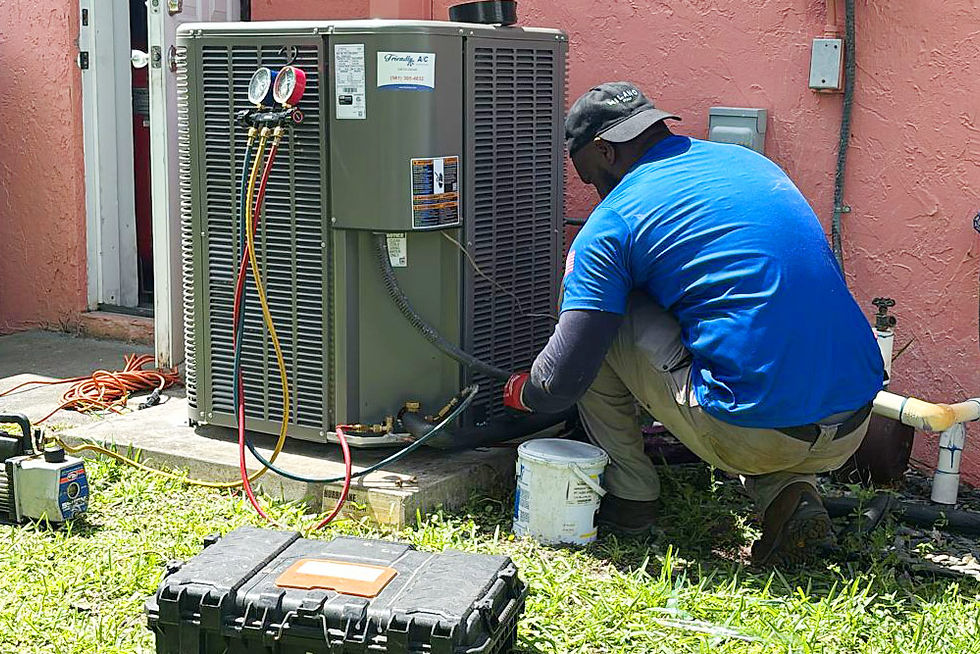The Ultimate Guide to HVAC Solutions for Improving Indoor Air Quality
- Michael Zrihen

- May 14
- 4 min read
Indoor air quality (IAQ) has a profound impact on health, comfort, and productivity. With people spending nearly 90% of their time indoors, ensuring clean, pollutant-free air is more critical than ever. Heating, Ventilation, and Air Conditioning (HVAC) systems play a central role in maintaining optimal IAQ by regulating airflow, filtration, humidity, and ventilation.

Expert Strategies for Improving Indoor Air Quality
This in-depth guide explores best practices for improving indoor air quality, detailing actionable strategies, technologies, and maintenance protocols that building owners, facility managers, and homeowners can implement.
Upgrade to High-Efficiency Air Filters
Air filters are essential in trapping airborne particles such as dust, pollen, and pet dander. Upgrading to high-efficiency filters can significantly improve IAQ.
Recommendations:
MERV Ratings: Choose filters with a Minimum Efficiency Reporting Value (MERV) of 11 or higher. MERV 13 filters are recommended for most building systems to effectively capture particles, including bacteria and virus carriers.
HEPA Filters: High-Efficiency Particulate Air (HEPA) filters can capture up to 99.97% of airborne particles, including allergens and dust mites.
Regular Replacement: Replace filters every 1–3 months, depending on usage and environmental factors.
Schedule Regular HVAC Maintenance
Routine maintenance ensures an efficient and effective HVAC solution for improving Indoor Air Quality
Maintenance Checklist:
System Inspections: Have HVAC systems inspected by professionals at least once a year to identify and address any issues .
Coil Cleaning: Clean evaporator and condenser coils to prevent mold growth and maintain efficiency.
Condensate Drain Maintenance: Ensure condensate drains are clear to prevent water damage and microbial growth.
Thermostat Calibration: Verify thermostat settings and system controls for accurate temperature regulation.
Implement Effective Ventilation Strategies
Proper ventilation introduces fresh outdoor air, diluting indoor pollutants and enhancing IAQ.
Ventilation Solutions:
Energy Recovery Ventilators (ERVs): ERVs exchange stale indoor air with fresh outdoor air while conserving energy by transferring heat between the incoming and outgoing air streams.
Demand-Controlled Ventilation (DCV): DCV systems adjust ventilation rates based on occupancy levels and indoor pollutant concentrations, optimizing air quality while conserving energy .
Exhaust Fans: Use exhaust fans in kitchens and bathrooms to remove contaminants directly from the room.
Control Indoor Humidity Levels
Excessive humidity can lead to mold growth and dust mites, while overly dry air can cause respiratory discomfort.
Humidity Control Tips:
Ideal Range: Maintain indoor humidity between 30% and 50% .
Dehumidifiers: Use dehumidifiers in damp areas like basements to reduce moisture levels.
Humidifiers: Use humidifiers in dry climates or during winter months to prevent dry air-related issues.
Regular Maintenance: Clean and maintain humidity control devices to ensure optimal performance.
Clean and Maintain Ductwork
Dirty or clogged ductwork can harbor dust, mold, and other pollutants, which are then circulated throughout your home.

Duct Maintenance Tips:
Regular Cleaning: Clean ducts every 3–5 years, depending on home specifics such as the presence of pets, allergies, renovations, and humidity.
Professional Services: Hire professionals for duct cleaning to ensure thorough and safe cleaning.
Monitor Airflow: Check for signs of reduced airflow or unusual odors, which may indicate duct issues.
Utilize Air Purification Technologies
Air purifiers can remove a wider range of contaminants, including volatile organic compounds (VOCs) and odors.
Purification Options:
UV Germicidal Lights: Install UV lights within the HVAC system to kill bacteria, viruses, and mold spores, ensuring cleaner air.
Whole-Home Air Purifiers: Integrate air purifiers into your HVAC system to neutralize pollutants.
Ionization Technology: Use ionizers to remove particles from the air by charging them and making them easier to capture.
Implement Smart HVAC Controls
Smart HVAC systems can optimize performance and improve IAQ through automation and real-time monitoring.

Smart Features:
Programmable Thermostats: Set schedules to ensure optimal temperature and humidity levels.
Air Quality Sensors: Monitor indoor air quality metrics such as CO₂ levels, particulate matter, and humidity.
Remote Access: Control HVAC settings remotely to adjust for occupancy and environmental changes.
Integration with Building Management Systems (BMS): Integrate HVAC systems with BMS for comprehensive control and monitoring.
Educate Occupants on IAQ Practices
Educating building occupants on practices that contribute to better IAQ can enhance the effectiveness of HVAC systems.
Educational Tips:
Proper Ventilation: Encourage occupants to use exhaust fans and open windows when weather permits.
Source Control: Advise against indoor smoking and the use of products that emit high levels of pollutants.
Regular Cleaning: Promote regular cleaning practices to reduce dust and allergens.
Humidity Management: Educate on the importance of maintaining proper humidity levels.
Choose Low-VOC Materials
Volatile Organic Compounds (VOCs) can off-gas from building materials, contributing to poor IAQ.
Material Selection Tips:
Low-VOC Paints and Finishes: Choose paints and finishes with low VOC content to reduce indoor pollution.
Natural Materials: Opt for natural materials such as wood and stone, which emit fewer pollutants.
Proper Storage: Store materials in well-ventilated areas to allow VOCs to dissipate before use.
Monitor and Adjust Based on IAQ Data
Regular monitoring of IAQ metrics allows for timely adjustments to HVAC systems.
Monitoring Tools:
CO₂ Sensors: Monitor CO₂ levels to assess ventilation effectiveness.
Particulate Matter Sensors: Detect levels of dust and allergens in the air.
Humidity Sensors: Ensure humidity levels remain within the recommended range.
Data Analysis: Use data analytics to identify trends and make informed decisions on HVAC adjustments.
Conclusion:
The best HVAC Solutions for improving indoor air quality and a Healthier Indoor Environment start with your HVAC System.
By implementing these HVAC best practices, businesses and homeowners can enhance air purity, boost energy efficiency, and safeguard health. Clean air isn’t a luxury—it’s a necessity. Contact Friendly A/C today to optimize your HVAC system now for a healthier, more comfortable indoor environment.

.png)



Comments